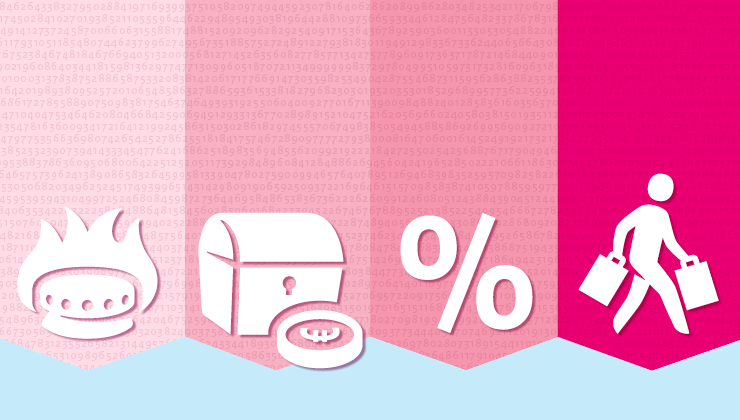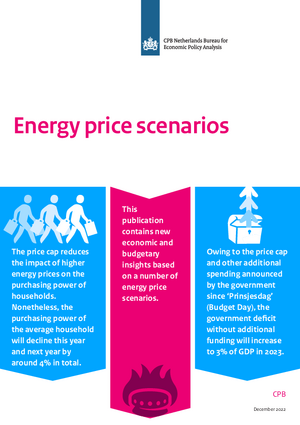Energy price scenarios
Energy cap dampens purchasing power risks, but is not a structural solution

Nevertheless, CPB director Pieter Hasekamp issues the following warning based on the scenarios: ‘The Cabinet has bought time with the support measures, but it must now think quickly about an exit strategy starting in 2023. We are facing structurally higher energy prices. A structural problem calls for structural solutions, which the current price cap is not.’
Inflation and purchasing power
In the baseline scenario, inflation (CPI) amounts to 3.5% in 2023. Without the price cap, inflation would be 2.5 percentage points higher. Due to the high level of uncertainty about the course of energy prices, CPB Netherlands Bureau for Economic Policy Analysis also outlines three other scenarios in the publication, in addition to a baseline scenario drawing on current gas price forecasts: lower gas prices, higher gas prices and higher gas prices combined with a harsh winter and thus higher gas consumption. As demonstrated by the scenarios, the price cap substantially decreases the sensitivity of households to energy price movements. In the two scenarios with higher gas prices, inflation and the average loss in purchasing power increases by only 0.2 percentage points relative to the baseline scenario.
As a result of the policy, lower-income households receive most compensation for high inflation. Inflation inequality is occurring as well, however, as lower-income groups on average spend a larger share of their income on energy. These differences in energy consumption are not included in the figures on purchasing power, although they are included in a new cost-of-living stress test. According to this stress test, in the baseline scenario, about 430,000 households are at risk of being unable to pay fixed and necessary expenses (e.g. food, housing and energy costs). In the ‘harsh winter scenario’, this could increase up to 500,000 households.
Public finances
In the baseline scenario, the cost of the price cap is €8.4 billion. In the ‘harsh winter scenario’, it increases to €13.1 billion. These costs and other additional public expenditures lead to further deterioration in the EMU balance in 2023. In the Macro Economic Outlook for September, this increased to 2.5% of GDP, but now the EMU deficit will be 3.0% of GDP in 2023. As demonstrated by the scenarios, higher or lower gas prices have only a limited effect on the EMU balance, as the revenues from natural gas sales also develop in tandem with energy prices.
Structural solutions
Energy prices are expected to remain high beyond 2023. The deterioration in public finances means that the financial burden falls on future generations. It should be kept in mind that revenues from natural gas sales are expected to fall after 2023, as less natural gas will be extracted in line with the decision on natural gas. Generic purchasing-power measures (e.g. the energy price cap) are untargeted; not all households are in financial need of the compensation. Such measures also reduce the incentive for the necessary energy conservation and increase in sustainability. In addition, the current policy may drive up energy prices and inflation even further, and the cap distorts the functioning of the energy market, resulting in undesirable outcomes. Recovery in terms of purchasing power will ultimately have to come primarily from wage adjustments. Public policy could best focus on sustainability and energy conservation, with targeted compensation to the most vulnerable households.
PLEASE NOTE: The figures on purchasing power were calculated based on the latest insights from Statistics Netherlands (CBS) concerning the calculation of energy prices in inflation, taking into account the price of current energy contracts, as well as the price of new energy contracts.
Contacts

Downloads
Contacts




